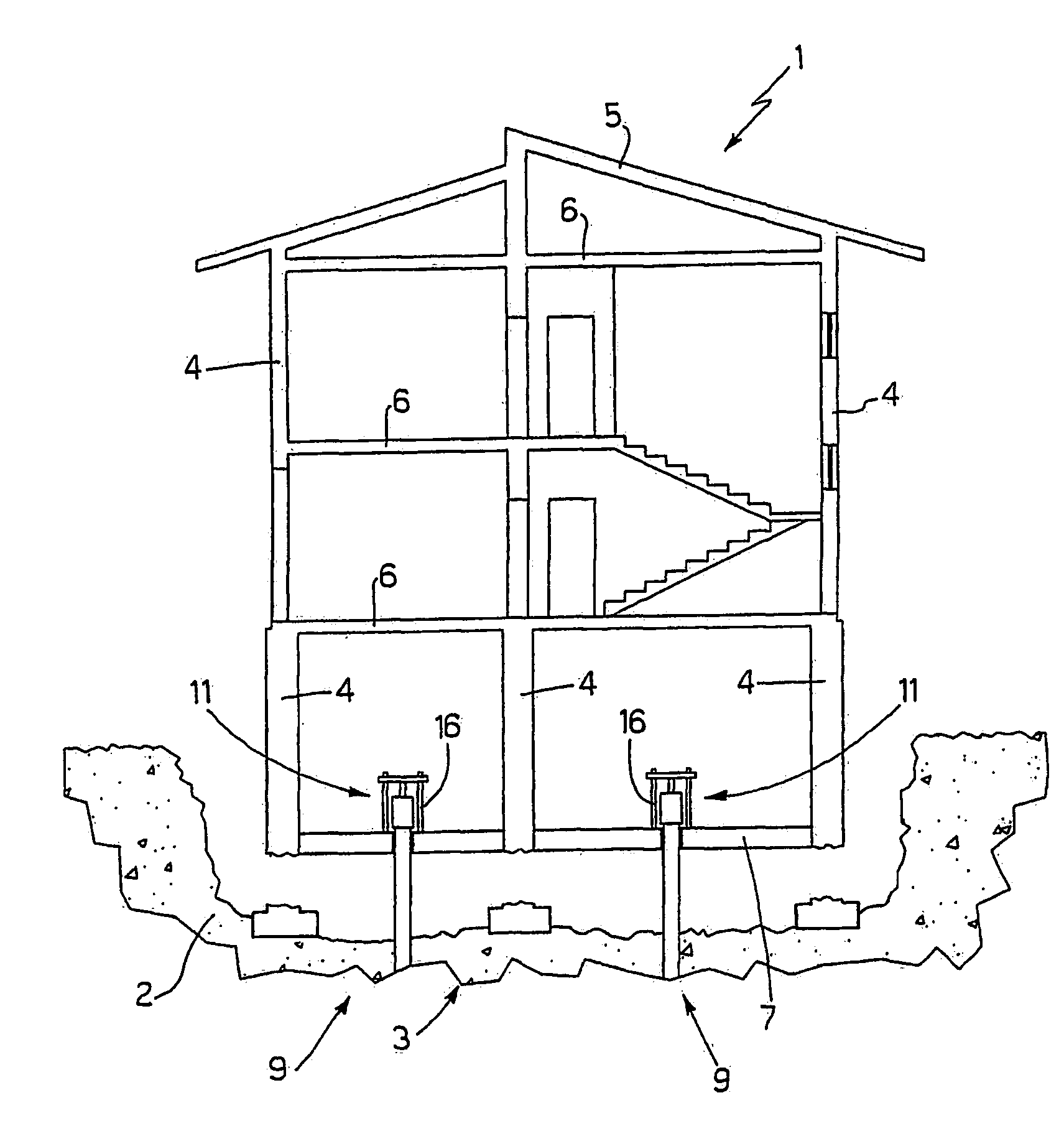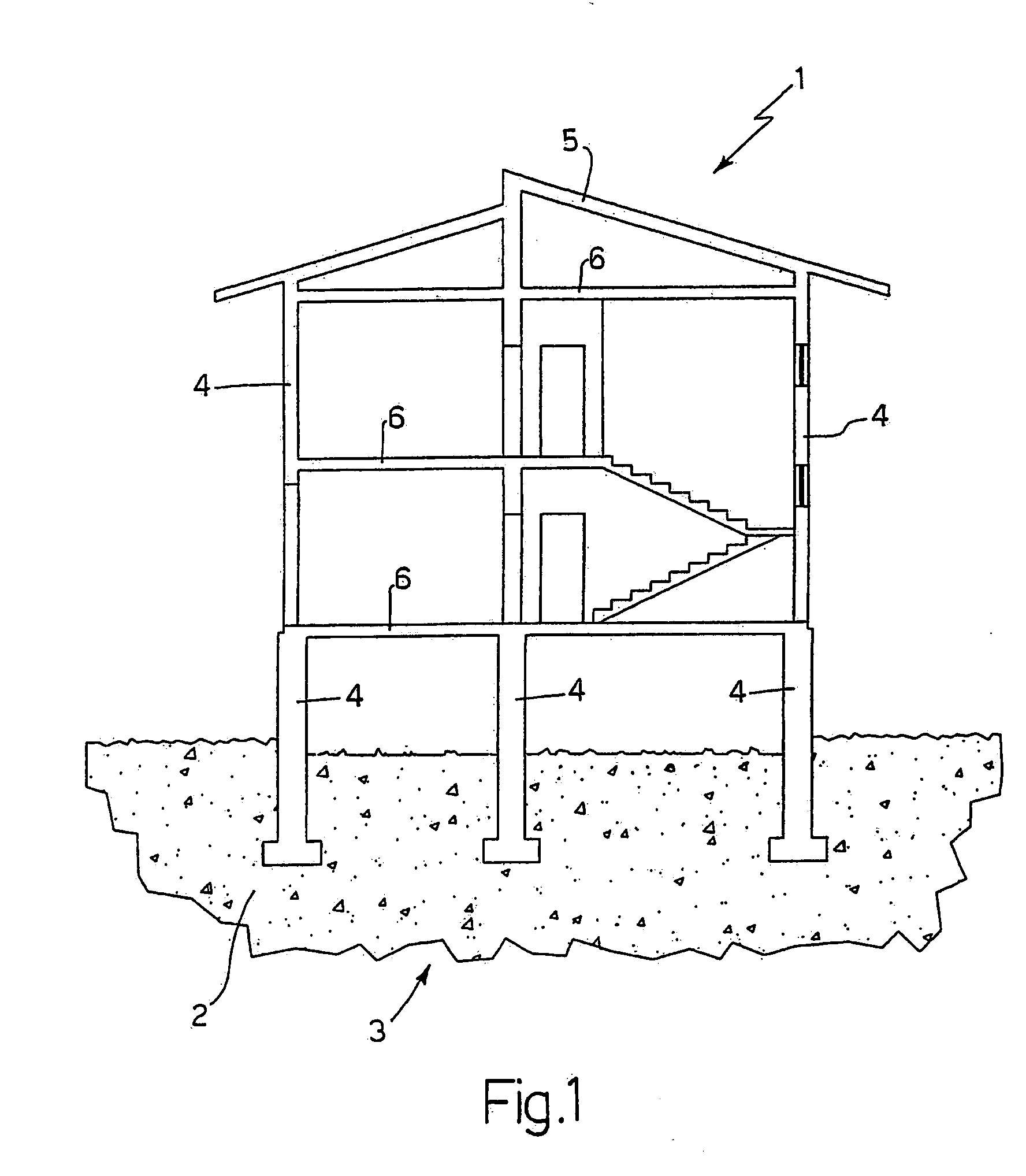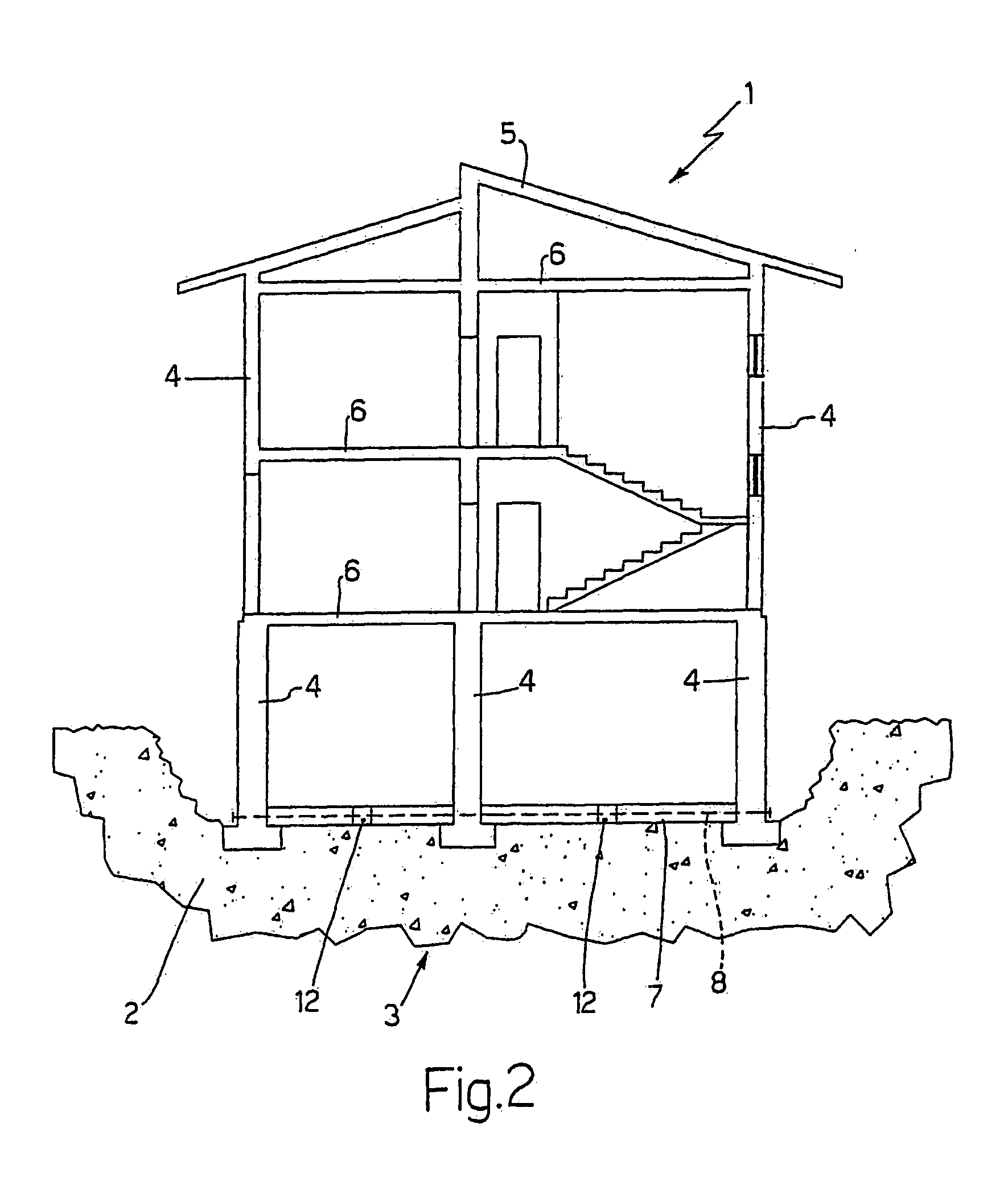Method of raising a building
- Summary
- Abstract
- Description
- Claims
- Application Information
AI Technical Summary
Benefits of technology
Problems solved by technology
Method used
Image
Examples
Embodiment Construction
[0020]Number 1 in FIG. 1 indicates as a whole a building resting on the ground 2 on a foundation 3, and to be raised with respect to ground 2. Building 1 comprises a number of supporting walls 4, each of which rests on foundation 3, extends up to a roof 5, and supports four floors 6. Building 1 also comprises a number of nonsupporting walls not shown in the accompanying drawings.
[0021]First, a survey of building 1 is conducted to determine the value and distribution of the masses constituting building 1, and which comprises floor plans of the various floors, and drawings of all the walls, showing door and window openings and any damage to the walls. Given the thickness and density of the walls, it is possible to determine their weight and weight distribution.
[0022]A static analysis of building 1 is also made to ensure it is capable of safely withstanding lifting-induced stress; and, if necessary, building 1 may be consolidated and strengthened before it is raised.
[0023]A survey of g...
PUM
 Login to View More
Login to View More Abstract
Description
Claims
Application Information
 Login to View More
Login to View More - R&D
- Intellectual Property
- Life Sciences
- Materials
- Tech Scout
- Unparalleled Data Quality
- Higher Quality Content
- 60% Fewer Hallucinations
Browse by: Latest US Patents, China's latest patents, Technical Efficacy Thesaurus, Application Domain, Technology Topic, Popular Technical Reports.
© 2025 PatSnap. All rights reserved.Legal|Privacy policy|Modern Slavery Act Transparency Statement|Sitemap|About US| Contact US: help@patsnap.com



